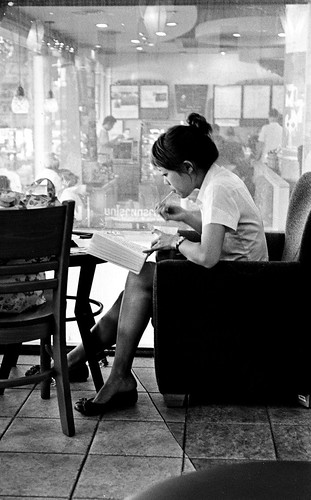[NOTE: this post originally appeared on Datachondria, a blog dedicated to technology, data, and modern life.]

LibraryThing has a wonderful "local" functionality which enables users to indicate their favourite bookstores and libraries -- the places where books as physical objects can be found, acquired, purchased. But why not allow users to indicate their favourite public places to read? Favourite cafes, parks, beaches, hotel lobbies, bus shelters. These are the places at which the various social and personal functions of books are best served -- whether those be isolation or flirtation, communication or solitude.
What does it mean as we move away from cultural objects as objects -- things -- and towards cultural objects as nexuses of cultural and social moments?
We've written elsewhere about the way in which books are not just containers for their ideas, but also become receptacles of our memories, of the images we hold of ourselves, and of the images that we want to project of ourselves to others. The same, obviously, is true of music, of art, of all cultural pursuits in which we engage -- and should be true of the metadata by which we navigate all of this stuff.
That's all true at a conceptual level, but has implications for how we live with these objects. When you are free from dealing with books primarily as stuff requiring storage space, you can start to organize them according to aesthetics or other whims and fancies.
For all of our "cultural objects", we should start to think about how our world is (or should be) organized around their cultural purposes -- not their physicality.
At last month's BookNet Canada Technology conference, DailyLit founder Susan Danziger and BookNet CEO Michael Tamblyn both touched on the social utility books have for flirting -- Tamblyn coining the term "Date Repellent Mode" to describe the current state of eBook devices (skip to 10:02 if you don't want to watch the entire -- wonderful -- presentation).
We need to become better at recognizing the social and personal spaces that our cultural objects serve, rather than the physical spaces that were previously the most manifest -- and challenging -- aspect of their existence. When that takes place, we will have an ecology of business and services around those objects that serves them all the better. And, most probably, better books too. Let's stop making the best ideas for the physical form they have to inhabit, and concentrate simply on the best ideas. In the best places.